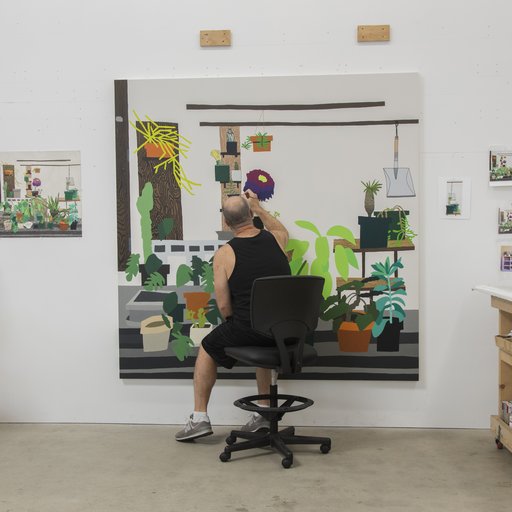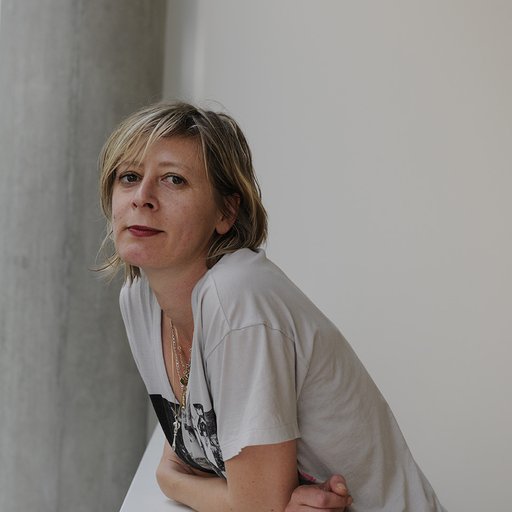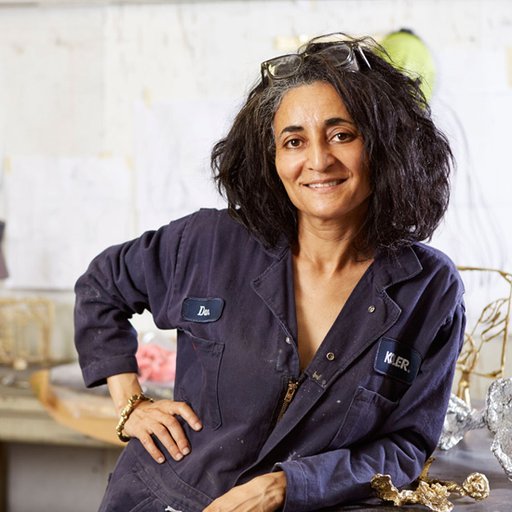The Guerrilla Girls have proudly been "giving the art world hell since 1985." In that time, the group has had over 55 anonymous members diverse in age, sexual orientation, class and from many ethnic backgrounds, with cis and transgender members from the very beginning. The group still includes some of its original members. Guerrilla Girls adopt as pseudonyms the names of dead women artists such as Frida Kahlo, Käthe Kollwitz or Shigeko Kubota, in order to keep the memory of these artists and their work alive. They use the classic tools of propaganda and mass marketing, including public protests, fly-posters, banners and stickers, to get their message across to people. They point out the inequality, sexism and hypocrisy endemic in the art world and the world beyond.
The group came together in response to the 1984 "International Survey of Painting and Sculpture" exhibition at MoMA, New York. They were incensed at the small number of women artists in the show and, after collecting data and doing the research to back up their impressions, they found that less than ten per cent were women. Their first poster campaign, What Do These Artists Have in Common? (1985), exposed this lamentable figure to the public. In 1989, they made what is probably their most famous campaign to date: a billboard depicting the concubine in Jean-Auguste-Dominque Ingres' 1814 painting Le Grande Odalisque wearing a gorilla mask, alongside the slogan Do Women have to be naked to get into the Met. Museum?
The Guerrilla Girls' activism is inflected with a keen sense of humor, evident in their signature gorilla masks. As the self-proclaimed 'conscience of the art world,' they carry out sharp and witty attacks on institutions that purport to produce and historicize culture while continuing to under-represent whole swathes of the population in their exhibition programs and permanent collections. Over the years, their poster portfolios decrying gender inequality in public collections have been acquired by major museums, yet in many of their collections inequality persists, and the Guerrilla Girls' project continues.
Their recent campaigns have targeted billionaire art collectors, many of whom sit on the governing boards of museums and can therefore influence decisions about which works are acquired and exhibited by those museums, biasing the art market and misrepresenting the diversity of culture today. Dear Billionaire Art Collector (2015) also drew attention to the low wages of those tycoons' employees. As the Guerrilla Girls are fond of saying, after more than thirty years they are still "not ready to make nice."
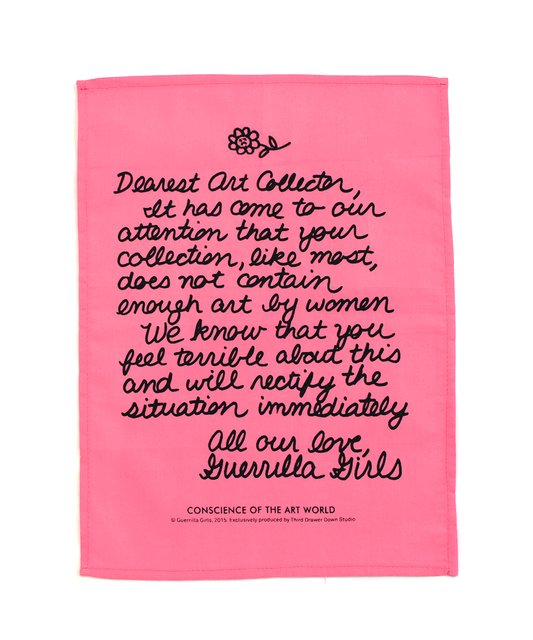 Dear Art Collector Handkerchief
is available on Artspace for $17
Dear Art Collector Handkerchief
is available on Artspace for $17
How were the Guerilla Girls born?
We started as a bunch of artists who knew each other in the downtown New York art scene. Two of us, Frida and Kathe, met when we were both baby artists in an art world in which almost all of the opportunities, and certainly the money, went to white male artists. As we spent more time together we started making jokes about the structure of the art world, realizing it was a closed system with unspoken discrimination.
When MoMA did a show in 1984 that was supposed to be a survey of international art, but included only seventeen women and even fewer artists of color out of 169 artists, women artists held a demonstration outside the museum. We were shocked that no one going into the museum cared. That was our 'A-ha!' moment. We realized that there had to be a new kind of activist art that would change people's minds about these issues.
What was the first artistic project you created together? Do you think it would be a one-off?
Frida and Kathe had the idea to form a group and make street posters. We invited some artists we knew to a meeting—and brought along a drawing for the first poster. In bold lettering, it posed the question, "What do these artists have in common?" The answer: "They allow their work to be shown in galleries that show no more than 10% women artists or none at all." It included a list of some of the most well-known white male artists of the day. A that first meeting, we also put together a companion poster about art galleries that showed less than ten per cent women. We named ourselves Guerrilla Girls, wrote a press release and chipped in money for printing. When those first two posters hit the streets of New York in May 1985 all hell broke loose. We started designing more and more posters—about how it was doubly hard for women artist of color, how few museum shows featured women and many other art issues. We also expanded our critique to address political, social and pop culture issues. We had no idea that Guerrilla Girls would continue for over three decades.
How does membership of the Guerrilla Girls work: how many members do you have and can anyone (male or female) be a member?
Over the years, more than 55 individuals have come in and out of the our group: some for months; some for decades; some for a single meeting. We have always been diverse in age, sexual orientation, class—and from many ethnic backgrounds: South Asian, Asian, African-American, Latina, European, etc. We've had cisgender and transgender members from the very beginning. Every member's life is different and we want to accommodate that, so we have no time limit or rules about membership.
How did you feel about the shared authorship?
There are many collaborative practices in other forms of contemporary culture: film, theater, music, TV. The concept of the individual genius artist is outdated, anyway, kept alive by an art market that needs super-expensive art objects made by "geniuses."
Is there a work that helped define, change or develop the way you collaborate?
Our most well known project, Do women have to be naked to get in to the Met. Museum? (1989) is a perfect example of how we work. We wanted to do a poster about the low number of artworks by women artists on view at The Metropolitan Museum in New York. The three most important ingredients to doing a project the "Guerrilla Girls Way" are: first, twisting an issue around and writing a headline in a unique, unforgettable way; second, thinking up an outrageous visual; and third, proving our case with killer statistics. Some of us went to The Met to do what we now call the 'weenie count' and get the statistics we needed; others wrote the text, imaged the visual and designed the poster.
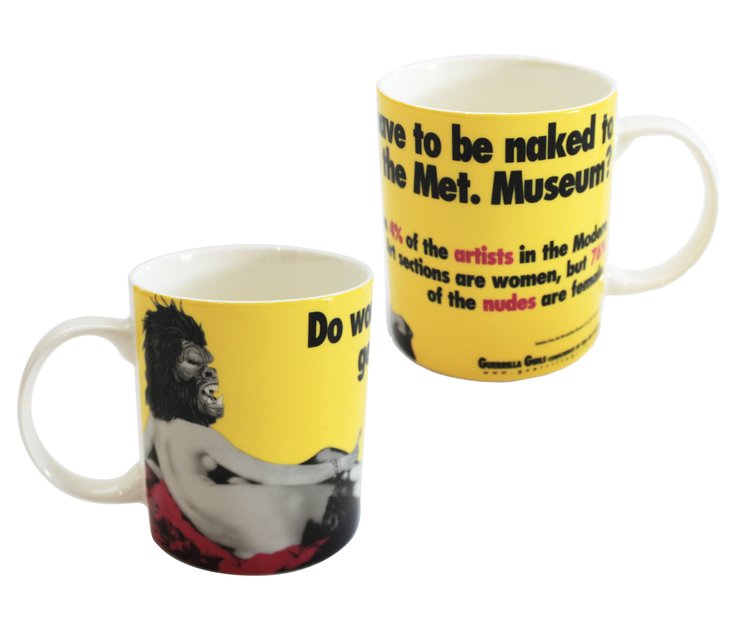 Do Women Have to be Naked Mug Set is available on Artspace for $42
Do Women Have to be Naked Mug Set is available on Artspace for $42
Is there a hierarchy in the group?
Over time hierarchies of experience and expertise have become inevitable, but new members bring fresh ideas that are equally important. Some projects are quicker to finish than others. It took us months to find the right twist for what became the Advantages of Being a Woman Artist (1988), and a much shorter time to come up with our Michelle Bachman billboard (2012), for example.
Three heads are always better than one, but sometimes too many heads spoil the stew. We pass projects around to make sure our message is clear. We work really hard and feel so lucky to be able to make work that means something to people all over the world.
Is there is a genre, medium, or material that is especially well suited to your collaborative work?
We are always exploring new media. We love computers, the Internet, digital printing, social networking. These types of media have made our work portable and reproducible anywhere. A four story-high banner in Rotterdam or Mexico City? No problem—we just send a digital file for printing. Our retrospectives in Bilbao and Madrid and our exhibitions all over the world are done the same way. No framing, no insurance, no transportation costs! These days we're doing large-scale video projections, too.
What happens if one of you is very fixed on an idea that the others don't like? How do you resolve disputes and differences of opinion within the group?
Collaboration is hard work. Usually we start with brainstorming, letting ideas and intentions flow. Then we get down to the nitty gritty of crafting a message. Often we argue about details. Sometimes one or more of us will agree to disagree and let a project go live, even if they aren't crazy about it.
We have experimented with every kind of working situation you could imagine and have faced every kind of group interaction, positive and negative, that can happen among so many people over thirty-one years. Sometimes it is sheer determination and stamina that gets a project to the finish line past all kinds of obstacles.
How have each of you negotiated working as part of the Guerrilla Girls in relation to your private lives and careers?
We don't talk about the specifics of our personal lives except to say we are all different and each of us has figured a way to carve out time for the Guerrilla Girls. We all have professional lives outside of the group. For some of us, the Guerrilla Girls takes almost all our time, for others less time. By the way, it's kind of great to have an alter ego. We have so many friends all over the world who only know us as our pseudonyms. Plus, you wouldn't believe what comes out of your mouth when you are wearing a gorilla mask.
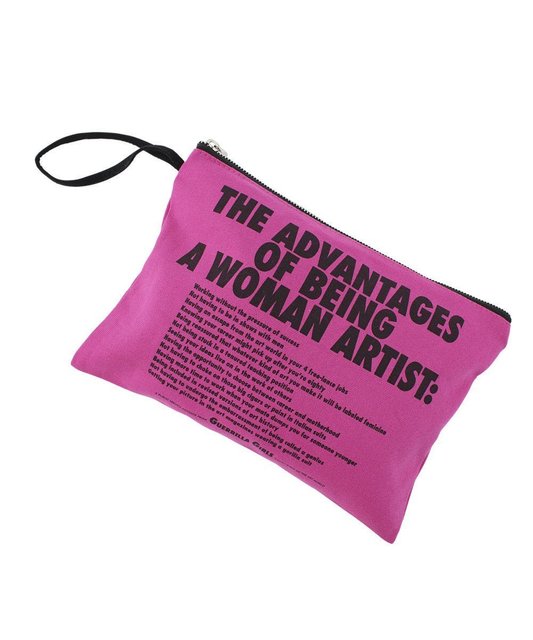 Advantages of Being a Woman Artist Clutch
is available on Artspace for $28
Advantages of Being a Woman Artist Clutch
is available on Artspace for $28
Is there a philosophy or politics you try to embody through working together?
We have always understood that the world of art and artists is great, but the system sucks. The art world is increasingly about power and money. Along with that comes discrimination, exploitation and income inequality. Most of what is wrong with the rest of the world is wrong with the art world, too. Unless museums and art history look like all of us, the record they keep won't be a record of our culture, it will be a record of who is in power. We have spent our lives fighting against that.
How have things changed in the art world since you started making work?
When we started out in 1985, the ideas of social practice, culture jamming and institutional critique were not really out there like today. Feminism was demonized. Intersectionality was something you heard about only in gender studies classes—although it is something our members have always believed in. Curators and critics had arguments about whether or not what the Guerrilla Girls did was even "art." We didn't care, we just kept doing it.
It's so gratifying to visit campuses now and hear that students no longer aspire to the art world status quo of 'get your degree, develop your style, find your gallery, sell your work, get rich and famous.' Look at all the great protest art and street art today!
How do you relate to the art market and has it had any effect on your collaboration?
We never wanted to be part of the art market. We have always made infinitely reproducible work. We never had galleries or collectors. Our work doesn't come up at auction. We've lived by making lots of small exchanges with many people: $20 gets you a T-shirt or a poster or a book. We make hundreds of appearances at schools and we do lots of small and large projects for arts organizations. Portfolios of our posters are now in the collections of over fifty museums the world over. We want our complete works to impolitely lurk inside museum collections, next to the fancy, super expensive artworks that lots of artists think they have to make. We want to show there were alternatives in the 21st century.
It's a lot of work but we created a new market paradigm of how to survive as artists. One of our secrets is that we don't want to be rich or even admired. We just want to keep working, be respected and continue to have some fun attacking the system.
RELATED ARTICLES:
How to Make EFFECTIVE Political Art: 6 Rules of Thumb
A Good Crisis: DIS' Lauren Boyle Discusses the Art Collective's New Political PSA Videos
8 Iconic AIDS Activist Artworks that Changed the Trajectory of the Epidemic
















